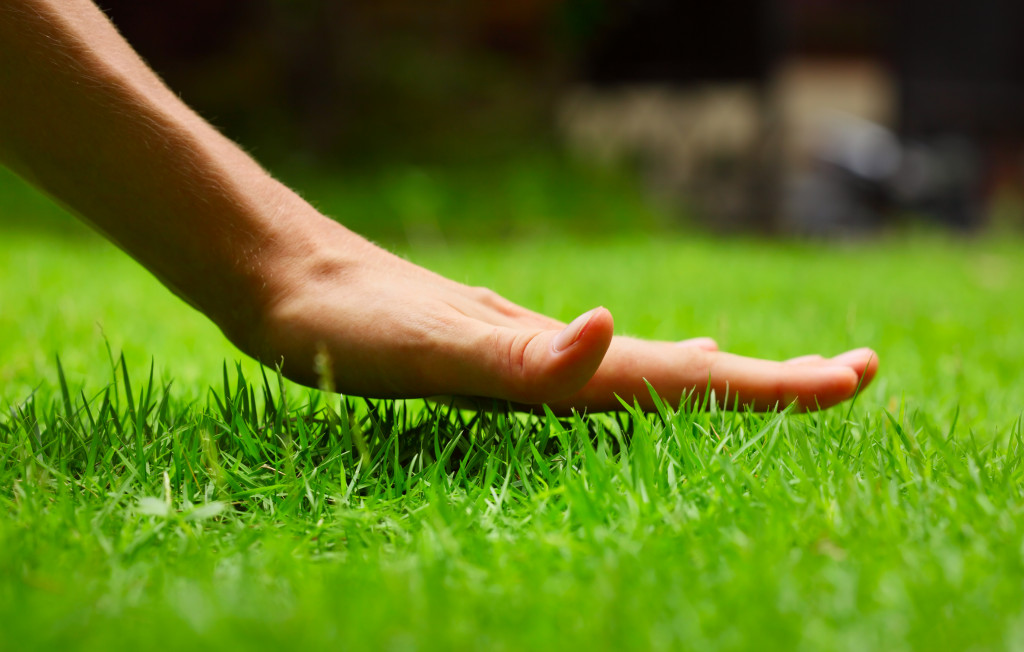Seeing your dogs and cats run around the lawn is soothing to your senses and your tired soul. There’s something about their innocence in your yard that removes all the uncertainties of the past 18 months. However, you also worry about their safety there. That’s why you can’t even leave them in the yard without thinking that something terrible might happen to them. As much as you love your outdoor improvements, things like thorny plants and fertilisers can hurt your pets.
Keep the Garage and Shed closed at All Times
Dogs and cats love to explore. Dogs love running around while cats climb trees, cars, shelves, and what-not. Dogs also love to lick things to satisfy their curiosity. Although some breeds have an instinct not to lick things that can be harmful to them, smaller ones still get attracted to insecticides, pesticides, engine oil, fertilizer, road salt, and other chemicals found in the garden shed or garage.
As for the cats, you don’t want them climbing on your garage shelves. Those floating shelves can usually only carry so much weight. Any pressure from someone jumping on it might topple the shelves and hurt your cat. Also, they can knock out dangerous items that will break or spill.
Choose Landscaping that Is Safe for Pets
The People for Ethical Treatment of Animals (PETA) said that one of the best choices for cats and dogs is brick pavers. Not only do bricks prevent dogs from digging into the ground, but they also help keep their nails short as the constant walking and running on the bricks grind the edges of their nails. Flat rocks and pavers are also good alternatives, while you can use pebbles and rocks as long as they are not small enough to get stuck in their paws.
Keep Your Yard Toxin-free
You may be tempted to use chemical rodent killers because, well, they’re a nuisance. But these chemicals are deadly for your pets, too. If they lick any part with this chemical, they will experience a seizure, bleeding, and damage to the kidneys and other organs. Yes, dogs and cats get killed accidentally because of rodent killers. Instead of using chemicals, use traps to capture and relocate the rodents.
Furthermore, avoid things such as cocoa mulch, herbicides, fungicides, and many other synthetic chemicals. These are all bad for the dogs’ and cats’ health. If you are using them, ensure your dogs and cats can’t reach them.
Remove ‘Deadly’ Plants
Some plants are deadly to dogs and cats. These are sago palms, lilies, and azaleas. Castor bean or castor oil plants, dumbcane, tulips, oleander, and others are also toxic to animals. There are millions of plant varieties. You will never lack alternatives.
You may want to grow roses. Ripe rose hips can be good for dogs and cats because they are rich in Vitamin C. They help protect pets from urinary tract infections (UTIs). For those who want to grow herbs, you’ll want to put them in containers and away from your pets’ usual path. While they are not harmful to pets, they might pee on them so imagine putting those (even after washing) in your dishes.
Make Sure There Are Shaded Areas

Hardscaping may be more helpful to manage your yard when your pets spend time there. However, that also means there are no shaded areas in your yard. That’s going to be a challenge for your pets during summer. Ensure there are some shady areas where they can rest after running around or climbing fences and decks. Even if they are staying indoors with you, place a pet house in the garden so that they can rest here after playing. Make safe drinking water accessible to them at all times.
Put Tools, Equipment Away When You Are Done
Your dogs and cats don’t know how to operate a mower, but they can accidentally turn it on. Your cats, especially, love to climb and hang onto equipment and tools. If they are not secured, they can fall on your pets and injure them. After you’re done with your yard work, put away the tools and equipment in the shed or garage. Don’t leave them lying around since accidents—both with pets and kids—can happen anytime.
When you have pets at home, be extra careful about how you tend the yard and garden. Though you can still design it the way you want to, you need to consider what’s good and bad for your pets. Even trained dogs and cats will have a hard time identifying danger zones when they are comfortable playing in their own backyard.





